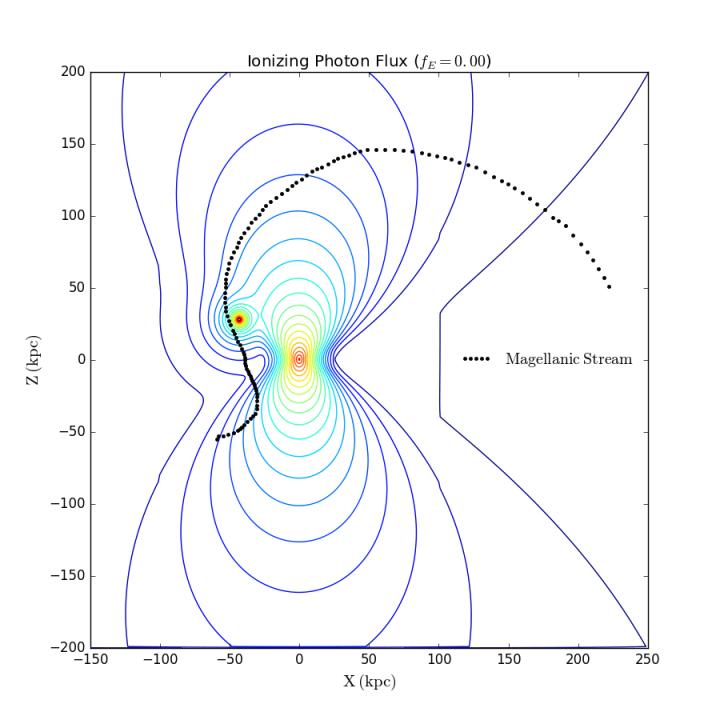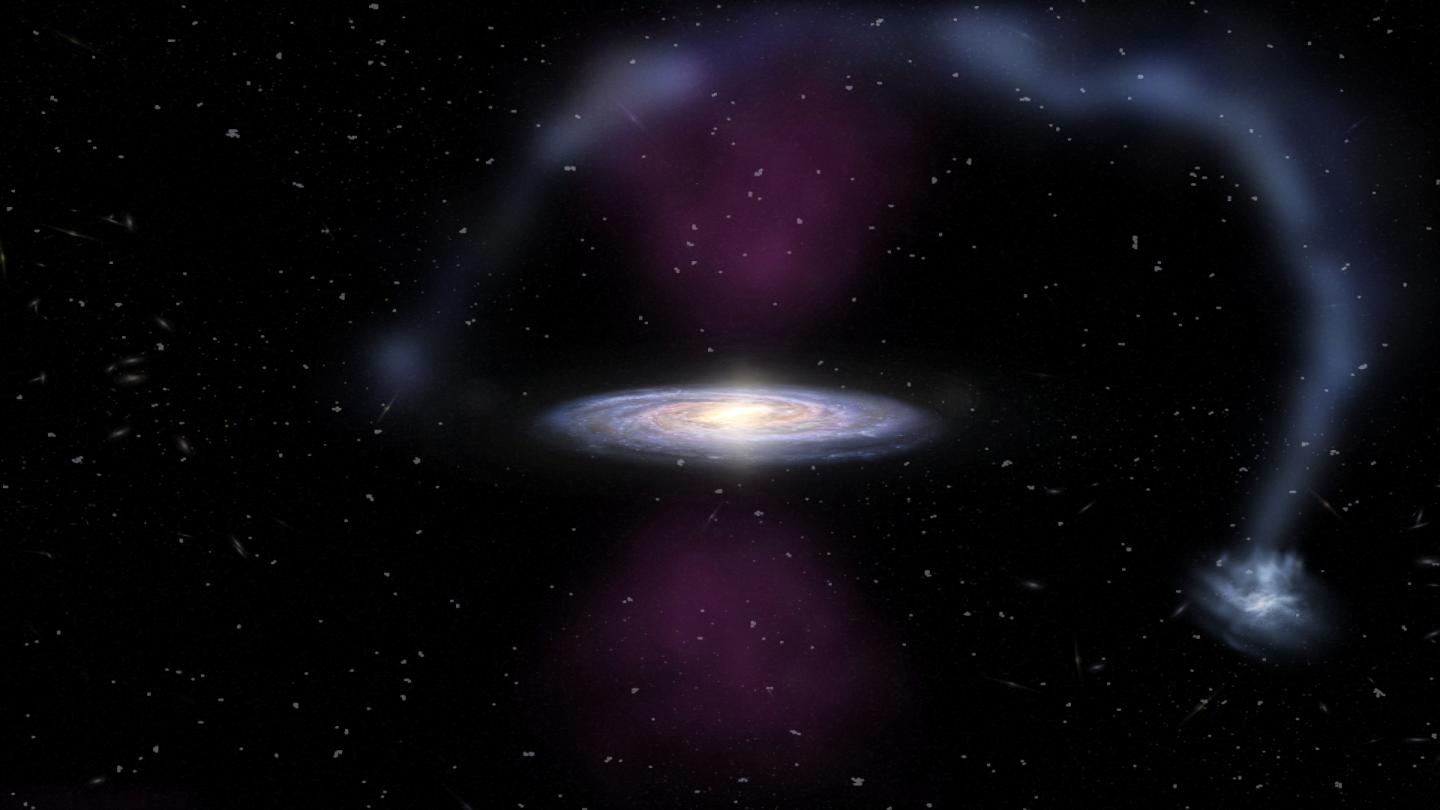How, not that long ago, the center of the Milky Way exploded
Right now, despite its 4.2 million solar masses, Sagittarius A*, the gigantic black hole at the center of the Milky Way, appears to be a harmless, sleeping giant. But that wasn’t always the case. If one of our ancestors, Australopithecus, had been able to observe the skies over Africa 3.5 million years ago (thus, long after the extinction of the dinosaurs) just as intensively as we can, he might have been able to witness a gigantic, approximately 300,000-year-long explosion in the center of the Milky Way, which created conical bursts of radiation extending through both poles of the galaxy out into interstellar space.
This observation is described by a team of researchers led by Professor Joss Bland-Hawthorn of the Australian ARC Centre of Excellence for All Sky Astrophysics in 3 Dimensions (ASTRO 3D) in the Astrophysical Journal (link to the full text). The phenomenon, a so-called Seyfert Flare, left its traces in the form of two enormous ionization cones that begin with a small diameter at the black hole and increase in size as they extend across the galaxy.
The flare was so strong that it also influenced the Magellanic Stream, which transports gas from the Large and Small Magellanic Clouds to the Milky Way and is at a distance, on average, of 200,000 light-years from the Milly Way. The explosion was thus too strong to have been caused by any other culprit than the black hole Sgr A*. With the help of Hubble data, the researchers calculated that the burst happened not that long ago – three million years, almost just a blink of an eye on the galactic scale, and then it was all over after only 300,000 years.
“This shows that the center of the Milky Way is a much more dynamic environment than previously assumed,” says Professor Lisa Kewley, director of ASTRO 3D. “We’re lucky that we don’t live there.” “These events change our understanding of the Milky Way,” says co-author Magda Guglielmo of the University of Sydney. “We’ve always imagined our galaxy as inactive with not such a bright center. But maybe now we need to reinterpret its nature and its development.”

